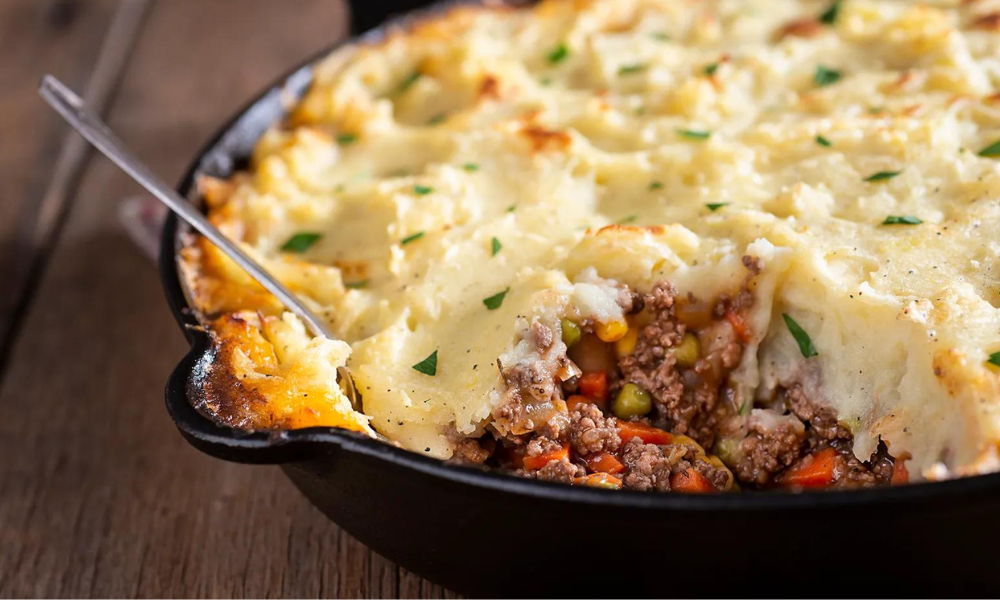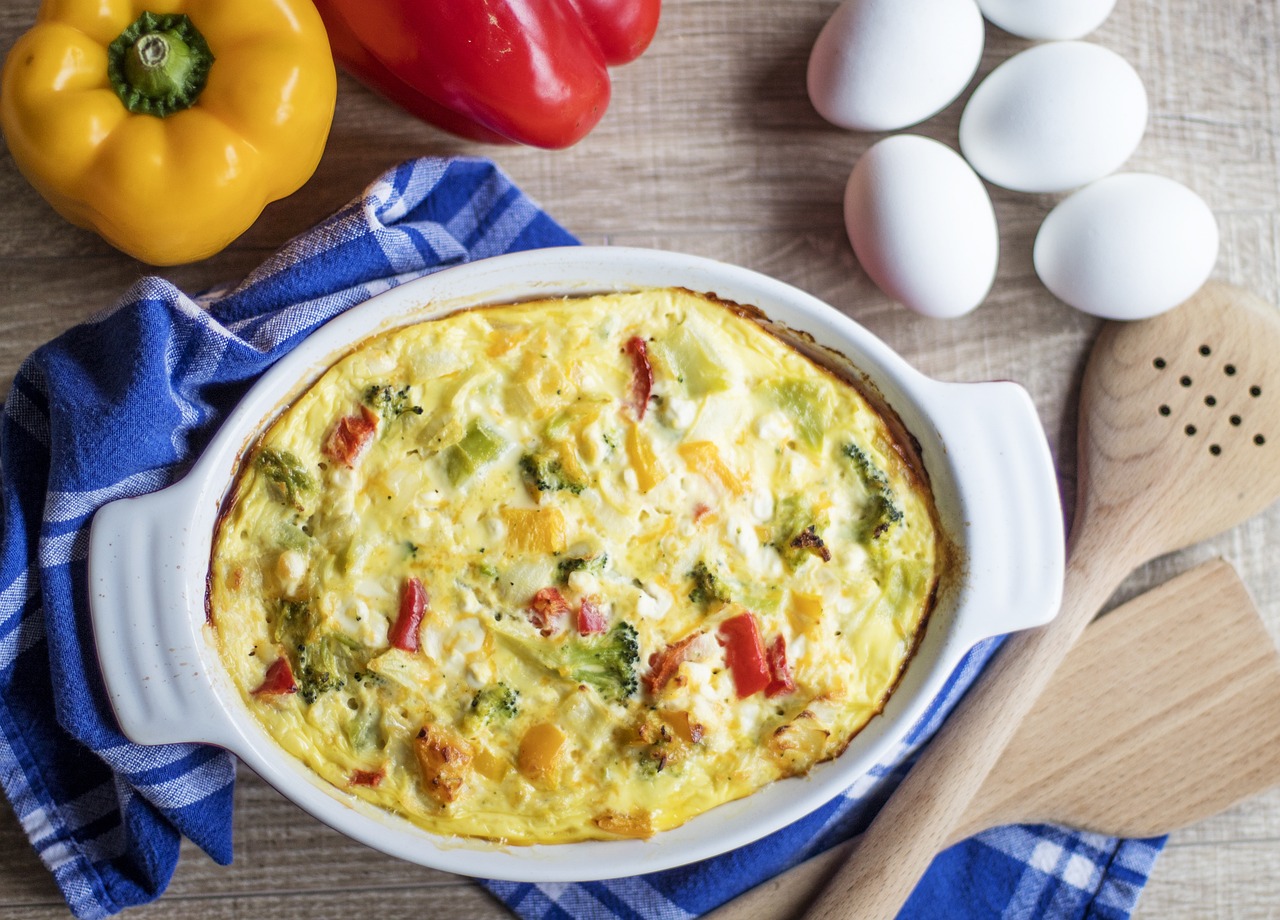Cottage pie is a nourishing and satisfying meal that’s easy to make and perfect for batch cooking. It’s also great for using leftovers, so it’s a good choice if you’re trying to reduce your food waste. Freshly baked cottage pie will last 3 to 5 days in the refrigerator; store it covered with aluminum foil or plastic wrap. If you have leftover pie, it’s important to reheat it properly to preserve the original texture and flavor. There are a few ways you can do this, including the microwave and the oven.
If you’re in a hurry to reheat your leftover pie, the microwave is an excellent option. This method will preserve the original flavor of your meat pie and avoid the soggy texture that can occur when reheating with the oven. To reheat cottage pie using the microwave, you’ll need to place it on a microwave-safe plate and heat it in 30-second increments until it is piping hot throughout. You may want to check your pie regularly and rotate it if necessary.

What is Cottage Pie?
A classic British dish known as cottage pie is created with mashed potatoes on top and is typically made with beef mince cooked with vegetables like carrots, onions, and peas. Usually, the meal is roasted in the oven until the potatoes are crisp and golden.
Hearty and comforting cottage pie is frequently served as the main course at family dinners. Different varieties of meat, including lamb or turkey, as well as different seasonings and herbs to add taste, can be used in variations of the recipe. The recipe is a fantastic method to stretch ingredients and use up leftovers because it is frequently cooked using leftover meat and veggies.
Overall, cottage pie is a wonderful and traditional dish that is ideal for a warm lunch on a chilly winter day.
How to Reheat Cottage Pie?
Cottage pie can be heated in a variety of ways and is quite easy to accomplish, including:
- Oven: Set your oven’s temperature to 375°F (190°C). Wrap the cottage pie with foil and place it in an oven-safe dish. Bake for 20 to 30 minutes or until thoroughly heated. To make the potatoes crispier, take off the foil and put the pan back in the oven for 5 to 10 minutes.
- Place the cottage pie in a microwave-safe dish, then wrap it in the wrap designed for this purpose. Reheat high in the microwave for two to three minutes or until well cooked. To make sure the pie is heated evenly, stir it halfway through.
- On the stovetop, put the cottage pie in a saucepan and warm it over medium heat while stirring occasionally.
Whichever method you use, check and stir the cottage pie periodically to avoid burning or uneven heating. To ensure that all bacteria are eliminated, and the food is safe to eat, cottage pie must be reheated to an internal temperature of 165°F (74°C).
How to Freeze Cottage Pie?
Cottage pie freezes well, making it a simple and quick meal option or a practical way to keep leftovers. How to freeze cottage pie is as follows:
- Cool: Let the cottage pie cool to room temperature entirely. This will make it simpler to freeze and help prevent the formation of any microorganisms.
- Wrap: Ensure that the plastic wrap completely encloses the cottage pie by wrapping it up tightly. The dish should then be covered in aluminum foil or a freezer-safe container with a tight-fitting lid.
- Put the date and the contents of the cottage pie on the label. This will make it simpler for you to determine when you’re ready and keep track of how old the dish is.
- Place the cottage pie in the freezer to be frozen. To stop the growth of bacteria, it is best to freeze the dish as soon as it has been wrapped.
- Place the frozen cottage pie in the refrigerator overnight to thaw, and then reheat it as instructed. Cottage pies can be frozen and kept there for up to three months.
How to Thaw Cottage Pie?
There are several basic methods for defrosting cottage pie, all of which are straightforward:
The safest and most efficient way to thaw cottage pie is in the refrigerator. Just put the dish in the fridge and let it thaw there for the night. Although it takes time, this procedure will aid in stopping the growth of bacteria.
Use a microwave to thaw the cottage pie by placing it in a microwave-safe dish and heating it on the defrost setting while stirring it every few minutes. While this method is quicker, it runs the risk of uneven heating and a half-cooked meal.
Countertop: Avoid thawing frozen cottage pies on the countertop to prevent the formation of bacteria that might cause food poisoning.
The cottage pie can be warmed as instructed in the oven, microwave, or stovetop once it has completely defrosted. To ensure that all bacteria are eliminated, and the food is safe to eat, cottage pie must be reheated to an internal temperature of 165°F (74°C).
How to Store Cottage Pie?
Simple methods can be followed to store cottage pie, which is a fairly simple process:
- Cool: Enable the cottage pie to reach room temperature entirely. This will make it simpler to keep while also assisting in the prevention of bacteria growth.
- Wrap: Ensure that the plastic wrap completely encloses the cottage pie by wrapping it up tightly. The dish should then be covered with aluminum foil or put in a container with a tight-fitting lid.
- Put the date and the contents of the cottage pie on the label. This will help you keep track of the dish’s age and make it simpler to tell when it’s time to use it.
- Place the cottage pie in the refrigerator to chill. To stop bacteria from growing, it’s better to preserve the meal as soon as you can after wrapping it.
Cottage pies can last up to three days in the refrigerator. It is advisable to freeze the cottage pie if you need to keep it for a longer amount of time. Simply place the frozen cottage pie in the refrigerator overnight to thaw, and then reheat it as instructed.
What is the Difference Between Cottage Pie and Shepherd’s Pie?
Shepherd’s pie and cottage pie are two foods that are similar to one another and sometimes confused. But there are some significant variations between the two:
- Meat: The sort of meat used in shepherd’s pie and cottage pie is the primary distinction. Shepherd’s pie is made using lamb, whereas cottage pie is made with beef.
- Vegetables: Both shepherd’s pie and cottage pie frequently include vegetables, including corn, peas, and carrots. Nevertheless, depending on taste, different veggies may be utilized.
- Mashed potatoes are used as a topping on both dishes; however, the quality and taste of the potatoes can change. Some cottage pie and shepherd’s pie recipes call for mashed potatoes to be flavored with butter, milk, cheese, or herbs.
Overall, shepherd’s and cottage pie are both delectable and comfortable foods that are ideal for a relaxing night. The type of meat and the particular ingredients used in the recipe make up the main distinction between the two dishes.
Why is My Cottage Pie Runny?
A cottage pie may be runny for many reasons:
- Vegetables that have been overcooked may produce an excessive amount of liquid, resulting in runny filling in the cottage pie.
- Filling that has not been adequately thickened may not set and will instead be runny.
- An excessive amount of liquid was added, causing the filling to become runny.
- Reheating: Reheating a cottage pie can make it runny, particularly if it is not properly stored in the freezer or refrigerator.
- Thin mashed potato topping: A thin mashed potato topping won’t absorb the filling’s moisture, leaving the pie watery.
You can try draining some of the filling’s liquid or topping the pie with mashed potatoes to make it less runny. If the pie is still watery, you may need to start with a fresh recipe or attempt to cure the filling by adding a thickener to absorb the liquid, such as cornflour or flour.
How to Identify Whether Cottage Pie is Spoiled?
It’s vital to watch out for the following indications to know if the cottage pie has gone bad:
- Smell: A rotten or sour smell will indicate that cottage pie has gone bad. It’s advisable to discard the dish if it smells bad.
- Appearance: It is recommended to discard the cottage pie if it has apparent mold, discoloration, or an odd texture.
- Taste: A sour or off flavor indicates that the cottage pie has gone bad and needs to be thrown out.
- Cottage pie should not have an unusual consistency, such as a slimy or watery texture, as this indicates food spoilage.
To avoid the development of hazardous bacteria and to guarantee that the meal stays fresh, cottage pie must be handled with care. It is recommended to err on caution and discard the cottage pie if you are unclear whether it is safe to consume.
What are the Side Effects of Consuming Spoiled Cottage Pie?
Food poisoning can result from eating spoiled cottage pie and present with a variety of symptoms, such as:
- Nausea and diarrhea
- Diarrhea
- stomach pain
- Headache
- Fatigue
- Fever
- Dehydration
The type of bacteria that contaminated the dish, the person’s general health, and the quantity of ruined food consumed will all impact how severe these symptoms are.
In people with compromised immune systems, such as the elderly, small children, and those with underlying medical disorders, consuming rotten food might cause more serious health complications.
It’s crucial to get medical help right away if you think you may have eaten spoiled cottage pie, especially if you are having severe symptoms. Additionally, getting lots of rest and drinking a lot of water will help to lessen how severe the symptoms are.
Conclusion
If you’re looking for a hearty, filling meal to serve your family on cold nights or days when you don’t feel like cooking, cottage pie is a fantastic choice. Originally from the UK, it’s made with ground meat, vegetables, and mashed potatoes – and is a perfect meal for keeping in your freezer.
To reheat your cottage pie using the stovetop, simply follow the same basic guidelines as when preparing it for dinner. The only difference is that you’ll need to add extra time for the pie to thaw before you start heating it, so plan accordingly!

